Wild Foraging: How To Identify, Harvest and Prepare Sea Beans (aka, Sea Asparagus or Samphire)
This post may contain affiliate links. See my disclosure policy.
This edible wild vegetable is known by many names but its scientific name is Salicornia and it’s a succulent that is native to North America, Europe, South Asia and South Africa. In the United States they’re commonly known as “sea beans” and in British Columbia, Canada they’re called “sea asparagus.” In the UK it’s known as “samphire”, in eastern Canada it’s called “samphire greens” or as “crow’s foot greens” in Nova Scotia, and other names for it include “sea pickle” and “marsh samphire.”
Considered a delicacy in most areas, sea beans are crispy with a salty flavor and they can be eaten raw in salads, steamed, boiled or sauteed. They sell for as much as $20 a pound at farmer’s markets but you can find this edible plant in the wild for free, and in large quantities, if you know where to look.
Here is a comprehensive article I found detailing the nutritional value of sea asparagus written by Dr. David Klein: Article.
Sea beans grow in coastal salt marshes and along the shores of salt lakes.
If you live near these areas or have visited the coast, chances are you’ve frequently seen them and once you know what they look like you can’t miss them. Just be sure to avoid areas where dogs like to visit! They break off with a clean snap and you can keep them in the crisper drawer of your fridge or in a cup of water like you would to revive celery.
We live near the coast and regularly visit the beach as a family. Recently we’ve been enjoying foraging for these sea beans and our kids have fun searching for, identifying and picking them.
Plump with salt water, these crispy vegetables are already seasoned with sea salt and pair naturally with seafood. Just lightly steam or boil them and serve them alongside your fish or shellfish for a tasty, delicate and delightfully crunchy vegetable.
They’re also great sauteed and added to a variety of stir-fries.
Sea beans are also great eaten raw in salads where their texture and salty flavor are highlighted.
The next time you’re near the coast or a salt lake, take a minute or two to scope out the area and more than likely you’ll find this tasty vegetable that you can take home with you to enjoy for lunch or dinner!
Disclosure: To ensure safety and selection of the correct plant, refer to diagrams and descriptions from a reputable plant identification guide.

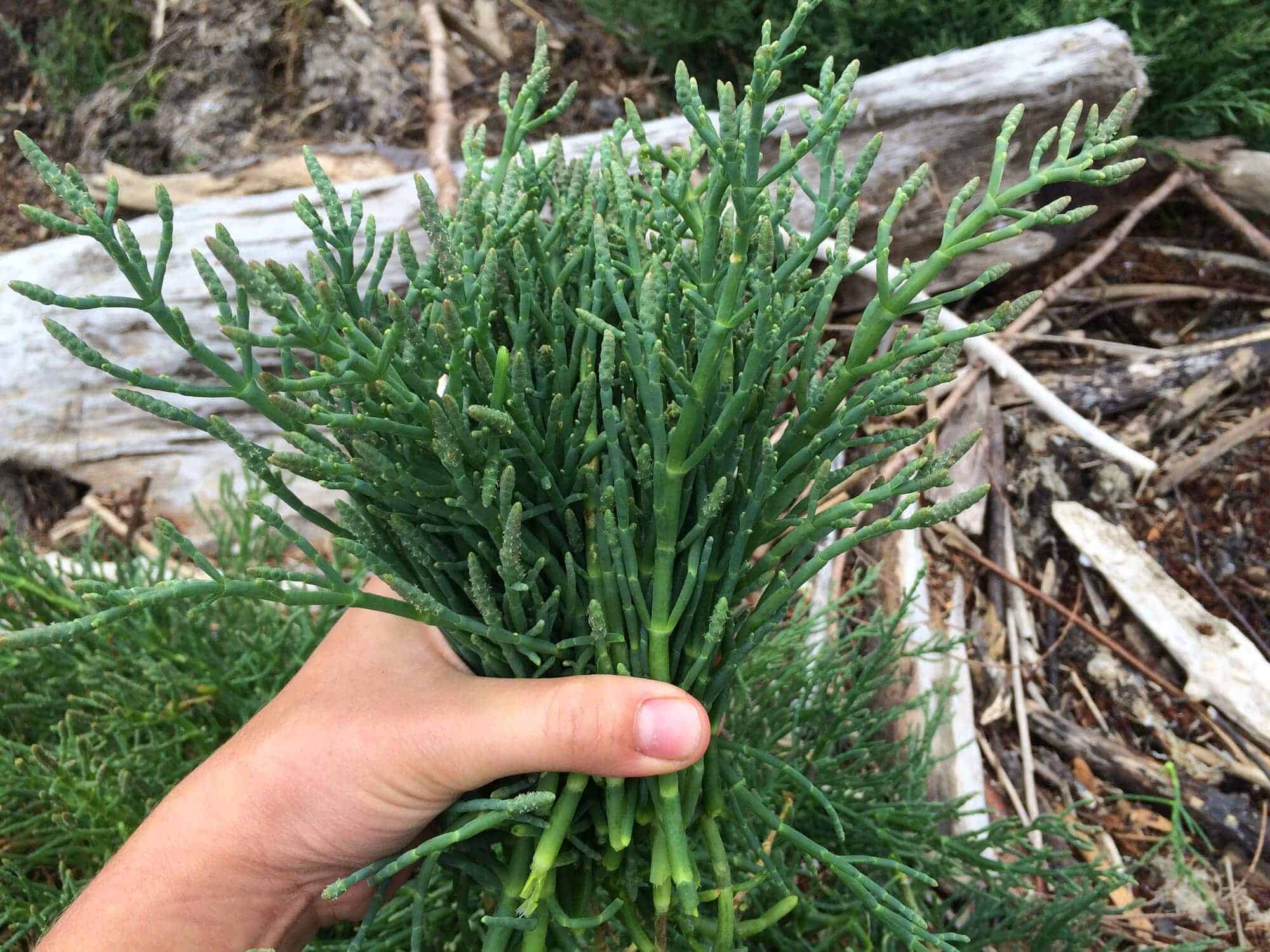
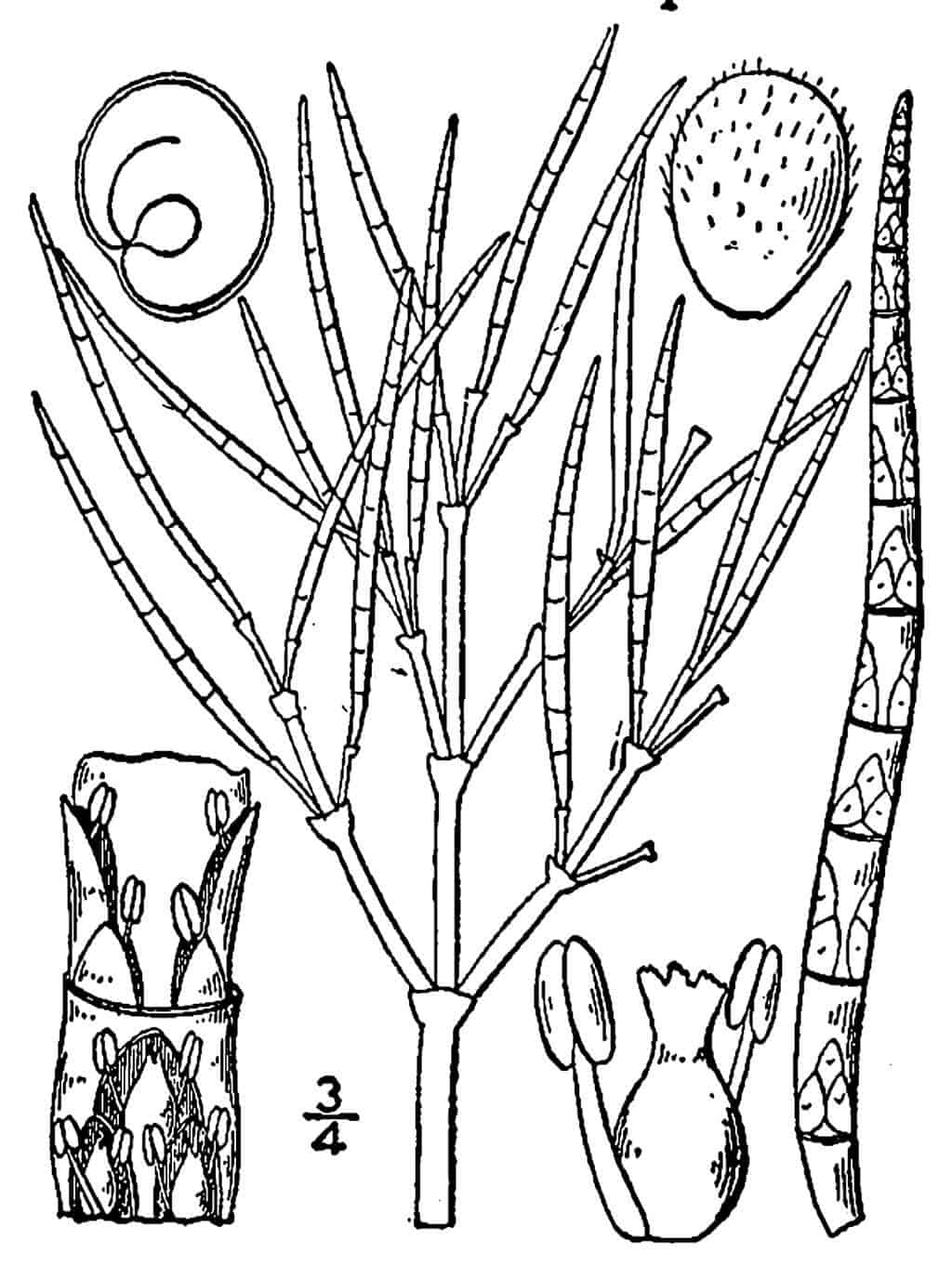

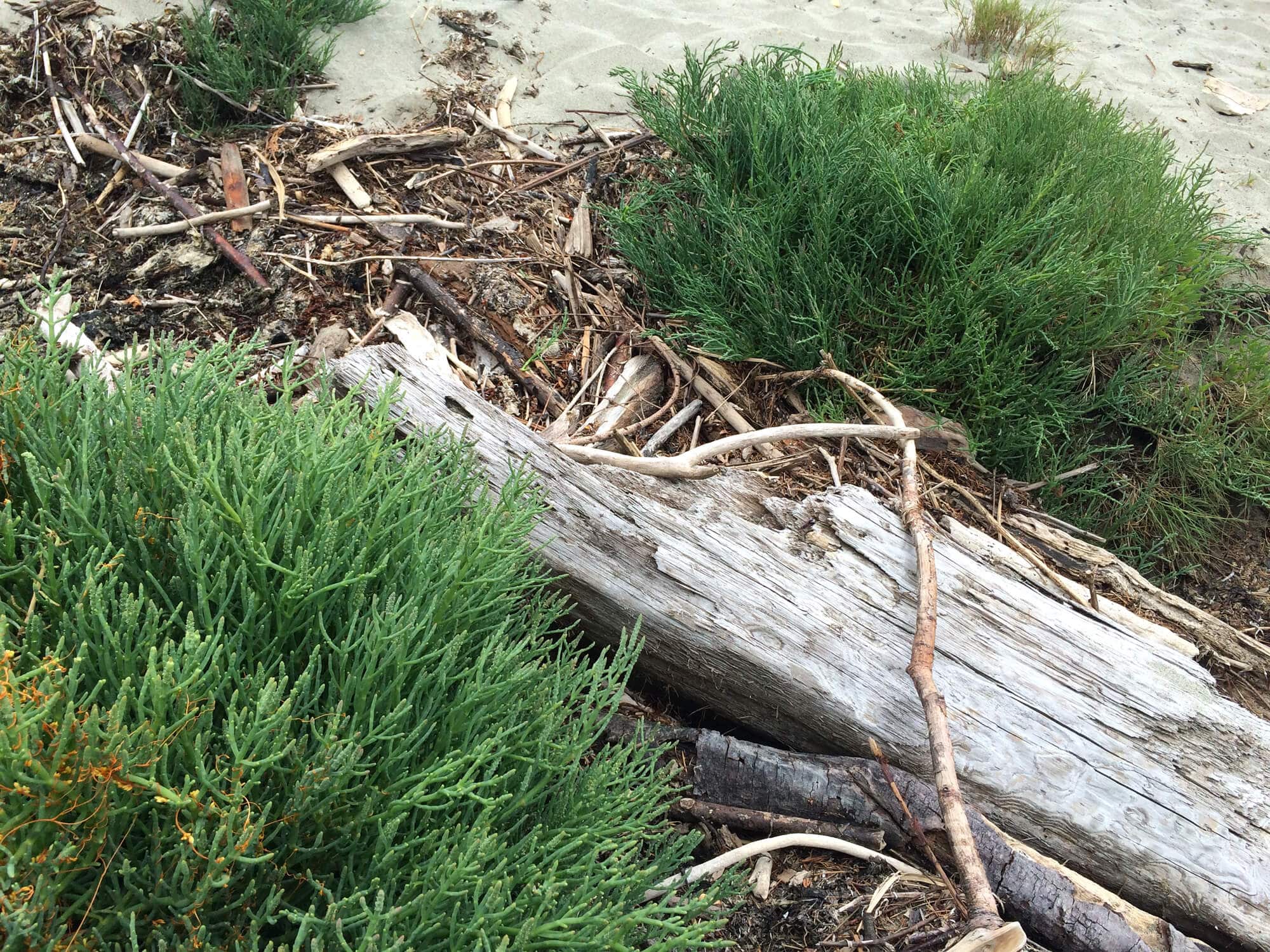
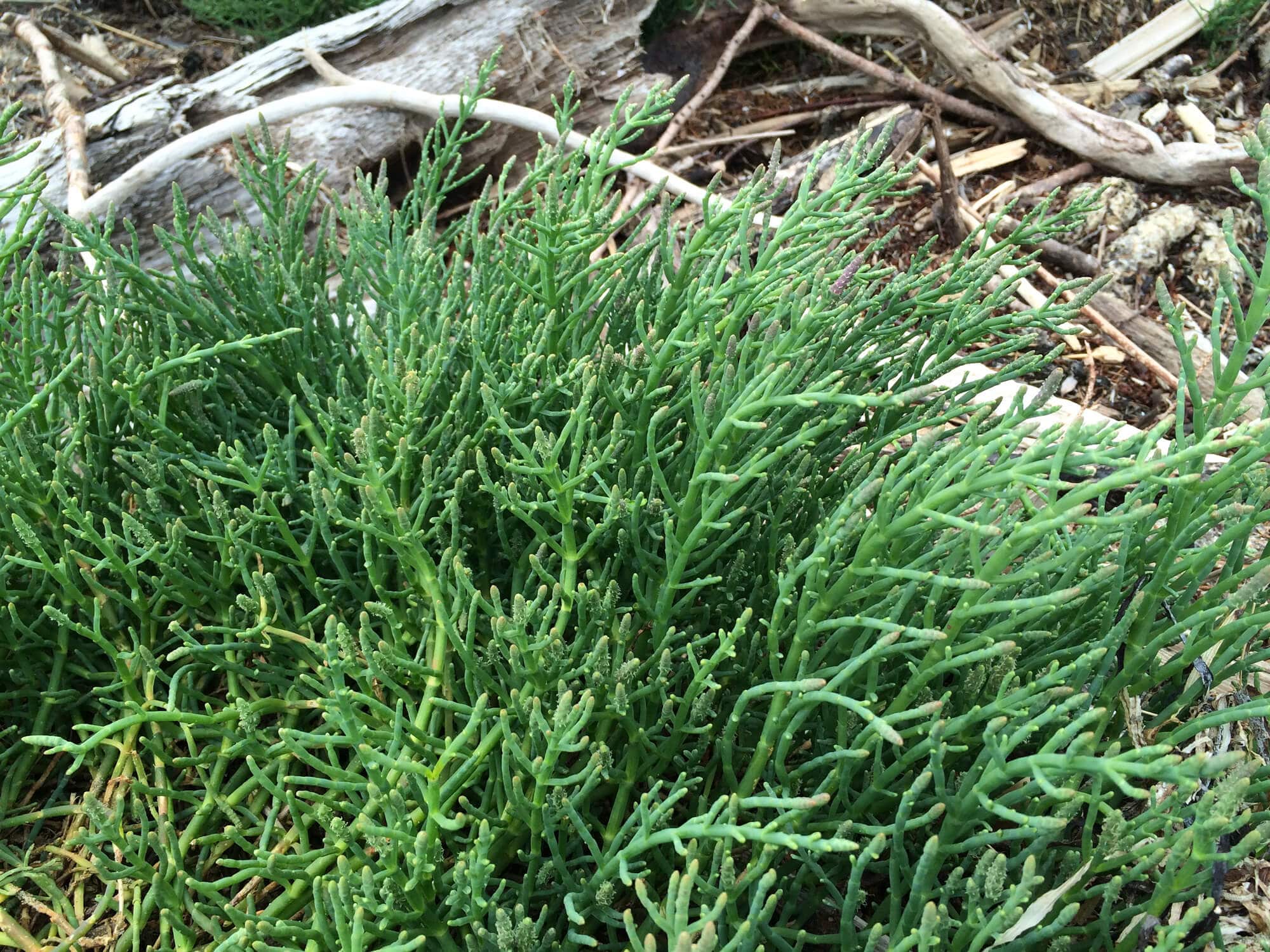
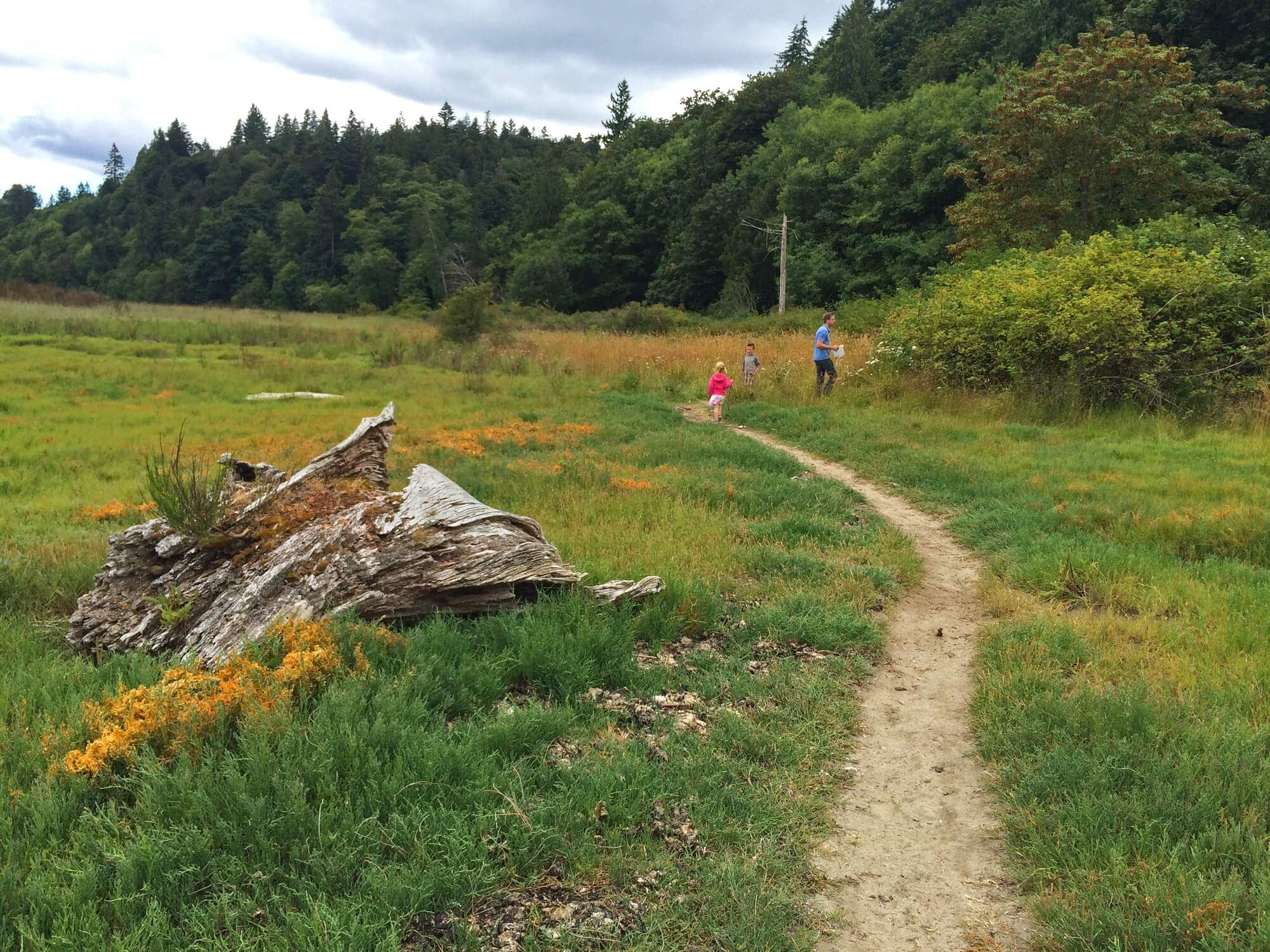
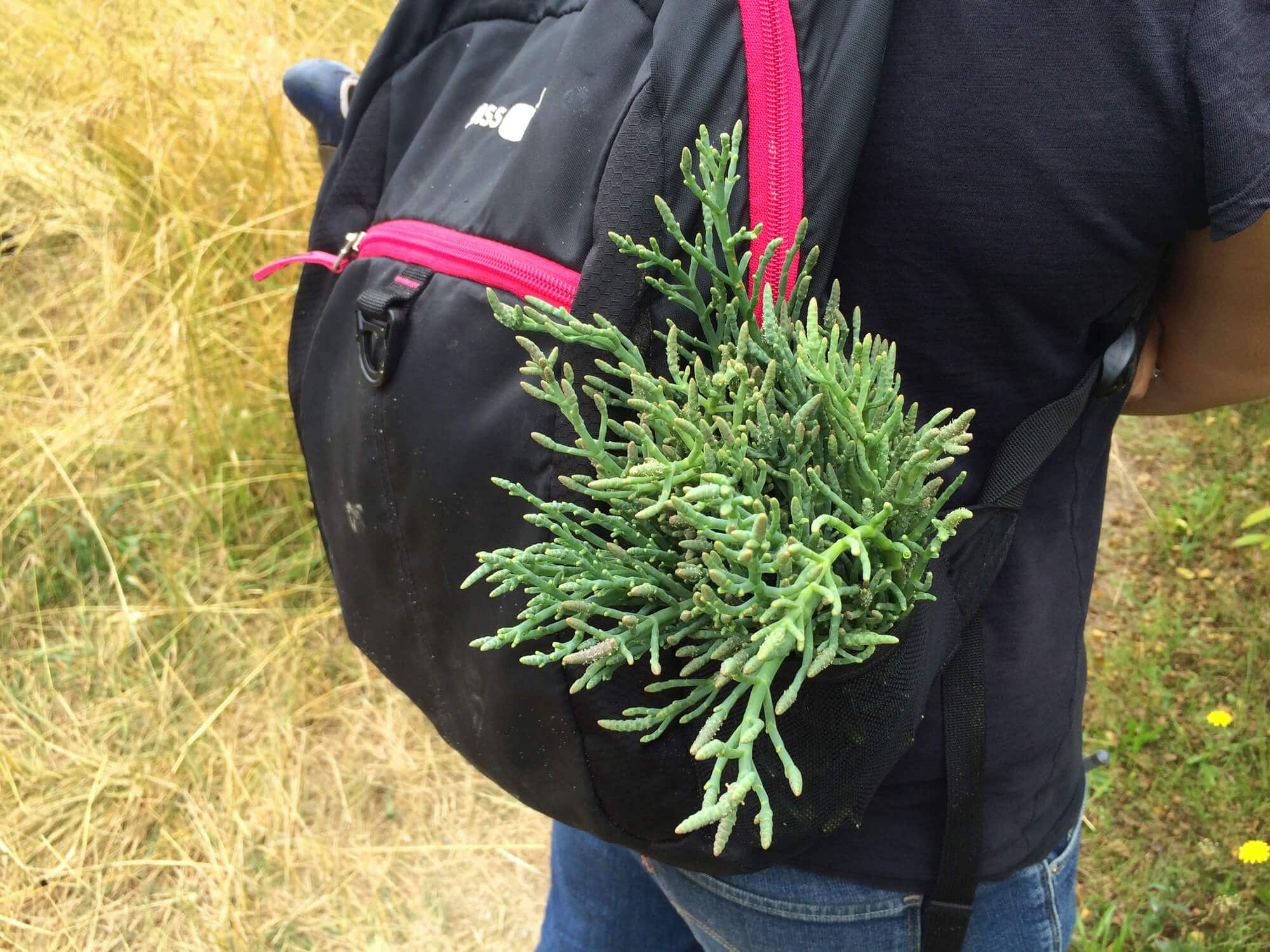
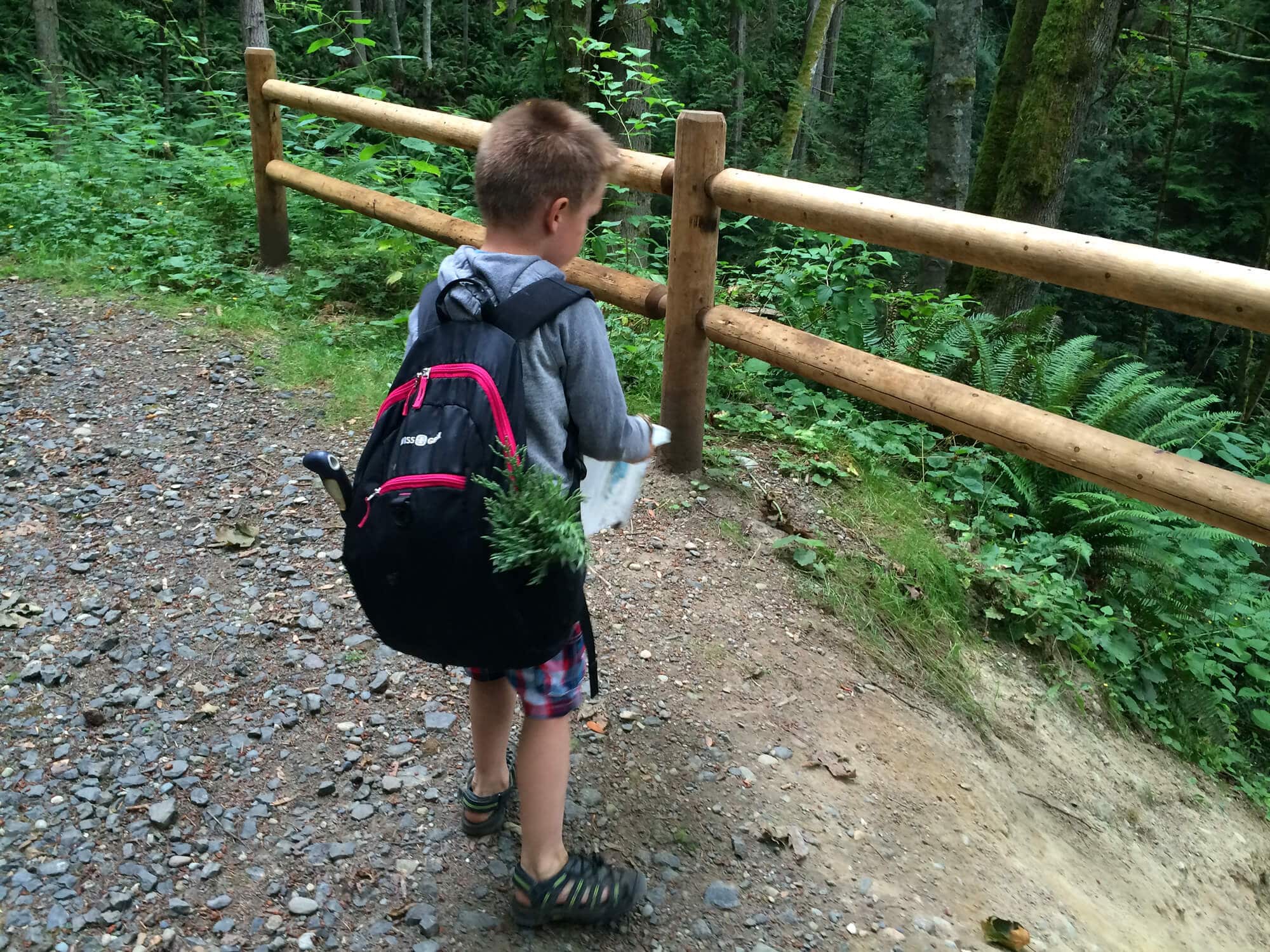
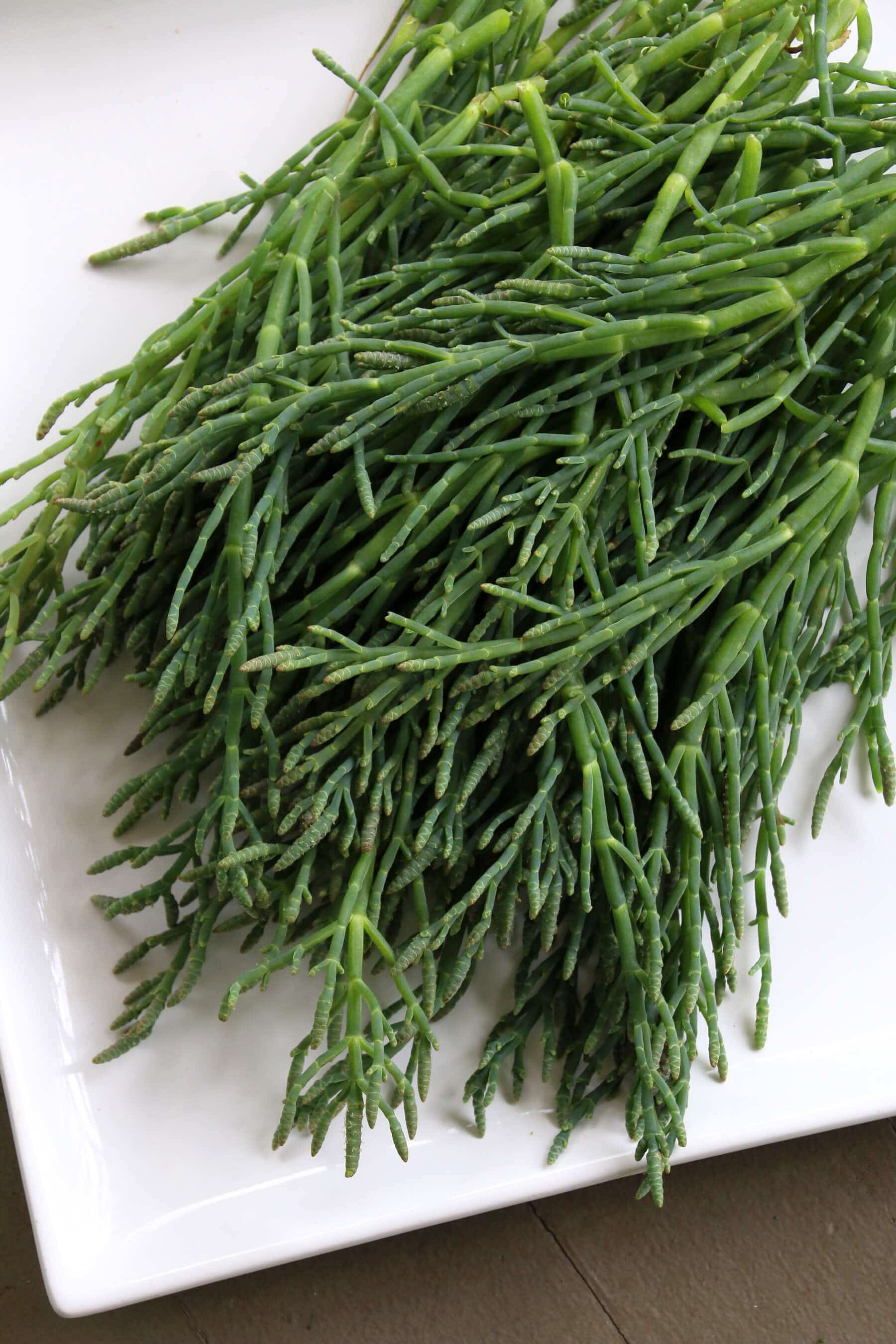
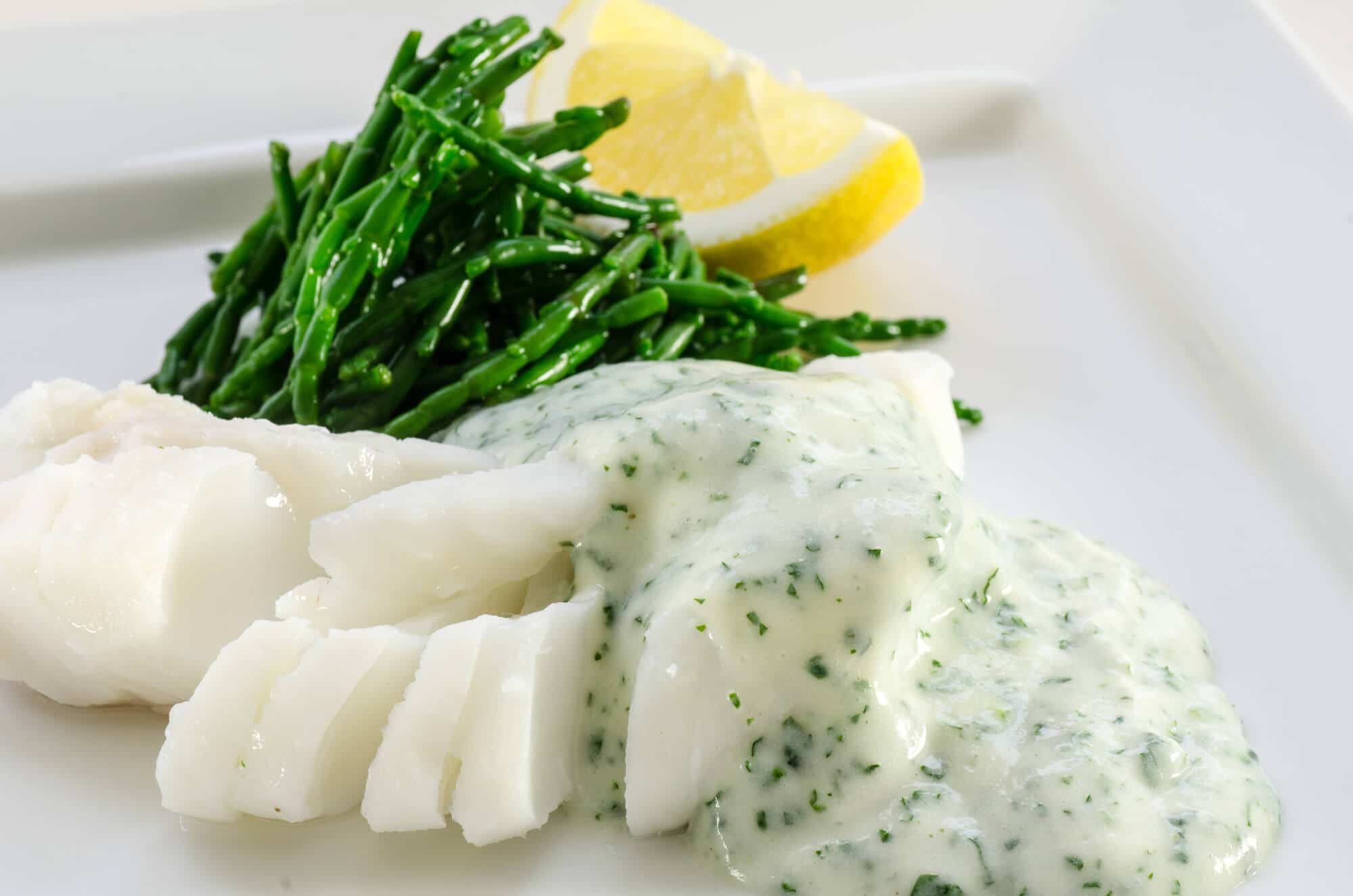
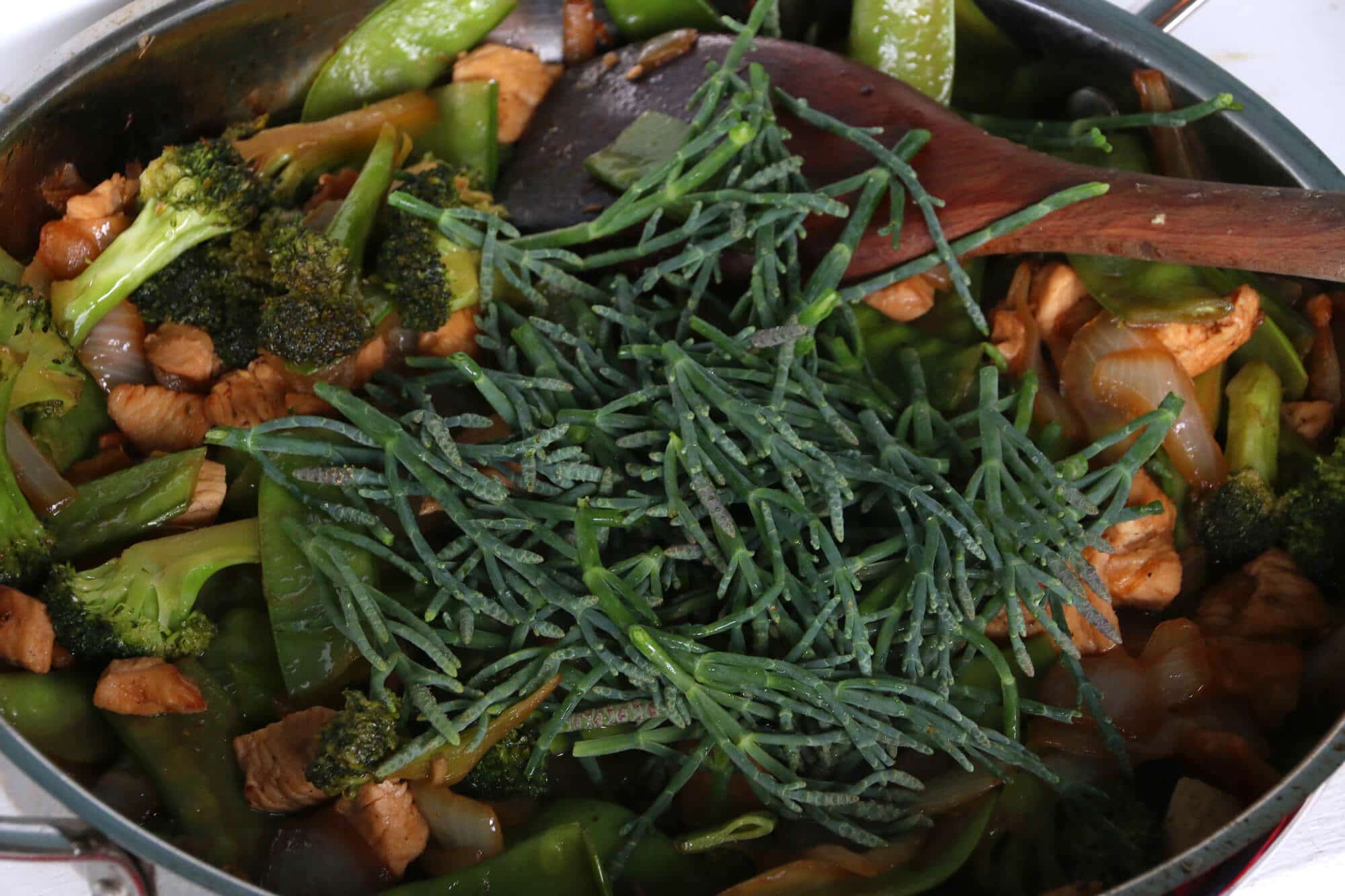
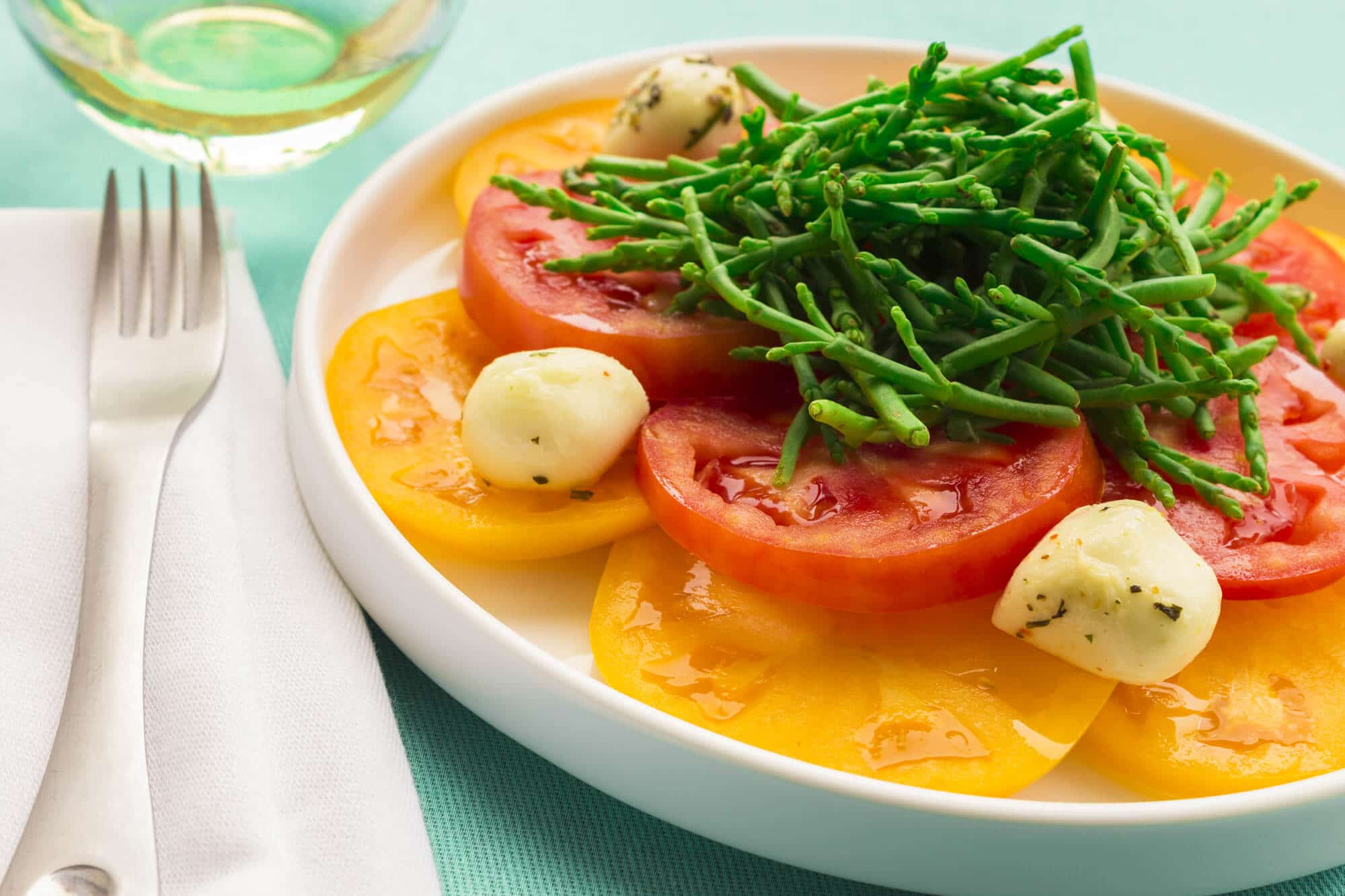


















It should also be noted that when harvesting them, you should not cut them at the base as this will prevent it from growing again. It’s best to cut off some of the stems but leave the integral part of the plant intact.
Very cool post! Can you tell us general areas in South Vancouver Island where we can forage this cool wild edible plant?
Where can I purchase or find Salicornia in Melbourne. I remember when I was young it was everywhere in Port Philip Bay. never seen them again. Also loved the sea snails that grew on the sandy sea grass during summer
I do have a concern that there’s no real identification key on this page (your best taxonomic image is an uncaptioned line sketch) and no consideration of the potential that a plant with a divergent but similar evolution in growth characteristics that is NOT EDIBLE and may be potentially be TOXIC is not discussed here..it may well be that there is no other plant that could be confused with samphire but in order to assure correct identification and a thorough and safe education for the general public you need to discuss taxonomy, plant toxins and provide known plant keys if you are encouraging people to collect and eat wild species. I grew up knowing warrigal greens intimately however there are several weed species that closely although superficially resemble them that i certainly would not advise people to eat. Just a thought!
We harvested about 500 grams today and going to see if we like. Some is going into a potato salad and some is being sauted. If we like, and I think we will, we are going to harvest a lot more tomorrow
How fun, Bernard! Let us know what you think of it. Treat it like asparagus in that you don’t want to over-cook it but keep it slightly crispy.
Does anyone know the nutritional values of these. I live on the coast just south of British columbia and have seen these but didn’t know they were edible.
Hi Mike, here’s an article I just found detailing the nutritional profile of sea asparagus: http://olakaihawaii.com/wp-content/uploads/2014/06/OlakaiHawaii-Sea-Asparagus-Vibrance-no.10.pdf
So fun!!! My daughter loves finding food out on the trails — raspberries, strawberries, and wild onions are her favorite. I’ve never had these sea beans, but they look delish.
This is such a cool post! I didn’t know a thing about sea asparagus until now. So cool that you can actually get some use out of them. :)
sea asparagus! How neat! I’ve never seen sea asparagus in my life but that’s so cool!
Wow. I’ve not heard of this. I love asparagus, so this sounds very interesting. Talk about FRESH food!!
This is so cool. I haven’t foraged for food in eons. We grew up travelling and my Dad was determined we knew how to find food any any environment. I love everything about this.
I am SO jealous. I love this stuff and only get it once a year after a trip to a specialty market downtown! If you ever have too much, feel free to ship some my way!
I will send you some! I’m on the coast camping and there is tons!!!
Love the farm to table concept!! I need to try this veggie someday!
What a great post! So informative!
I love this post. What a great way to show us where to find food. This is a real farm to table post. :)